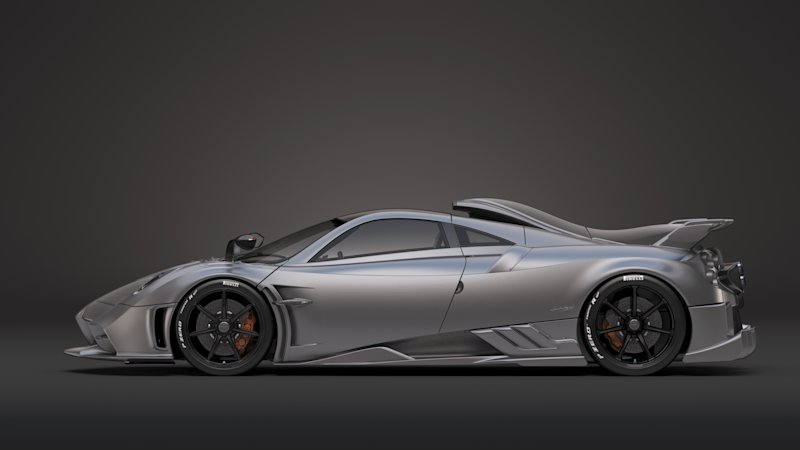The $5M track-focused Pagani Imola isn’t supposed to be elegant
The Pagani Imola, a track-focused version of the Pagani Huayra, first broke cover in September, 2019, at an event, but official information was nowhere to be found. It took a few months, but today, Pagani released the first batch of real images and gave fans the specs they’ve been waiting for.
With a pre-tax price tag of $5.4 million by today’s conversion rates, the Imola will be limited to only five examples, and Pagani says every car is already spoken for. The car is named for the Autodromo Enzo e Dino Ferrari racetrack in Imola, Italy, outside Bologna. There, the car logged roughly 3,728 miles during testing and validation, which the company says was the most severe tuning process ever conducted for a Pagani vehicle.
Immediately noticeable are the car’s aerodynamics and fierce looks. A rear spine gives the Imola a new technical profile, several new deflectors and inlets interrupt any hope for smooth lines, and the rear could double as a geometric abstract drawing. Founder and Chief Designer of Pagani Automobili Horacio Pagani even admitted in the press release, “We can’t say that it’s an elegant car. We wanted an efficient vehicle.”
Pagani bills the coupe as a technology test lab for its entire operation. Some of the innovations have already been applied to the Huayra Roadster BC, while others will be implemented in future vehicles. As with any high-performance vehicle, the focus was on weight savings, a balance between feel and control, and power.
To increase rigidity and strength while keeping weight at bay, Pagani reformulated its Carbo-Titanium HP62 G2 and Carbo-Triax HP62 used in the monocoque. The Imola introduces Acquarello Light, a new painting process that saves 11 pounds, and the car was built with roughly 770 forged or CNC-machined components. All said, Pagani claims the Imola weighs 2,747 pounds, slightly heavier than the 2,685-pound Huayra BC coupe but significantly lighter than the 2,976-pound regular Huayra coupe.
Under the hood, the Imola has a 5,980-cc Mercedes-AMG twin-turbo V12 that makes a claimed 827 horsepower and 811 lb-ft of torque. It works with an Xtrac 7-speed transverse automatic transmission, a triple-disc clutch, and an electro-mechanical differential. That output, which represents increases from the BC Roadster’s 791 horsepower and 774 lb-ft of torque, is sent to the rear wheels.
Pagani redesigned the suspension for better power transfer and reduced brake dive, and the Imola has a new Smart Gas system. Basically, the engine, differential, transmission, and suspension talk to each other and work together to reduce shift times and sharpen driving feel. The system has interconnected electronically controlled dampers that change ride height depending on the driving characteristics. This is in addition to an active aerodynamic system that was introduced on the original Huayra.
Additionally, the Imola has a custom carbon-ceramic Brembo braking system with six-piston monoblock calipers up front and four-piston monoblock calipers in the rear. Twenty-inch wheels up front and 21-inch wheels in the rear are wrapped with bespoke Pirelli Trofeo R rubber.
For Pagani, the man, the Imola circuit was a no-brainer when it came to testing, as the track’s history is equally as important as its racing characteristics.
“Imola is a sacred place for car enthusiasts,” he says in the release. “It’s a fast, difficult, technical circuit that has always separated the wheat from the chaff, in terms of both men and machines. A circuit that has made the fastest drivers faster, one that has given rise to fierce duels between opponents and gentlemen, and where the sweetest victories and bitterest tragedies have been witnessed. A circuit in the Motor Valley of Emilia Romagna. A place that has given so much to the automotive industry. That has given so much to Pagani. The Imola circuit became a second home while the car was being developed. This is why project code PS-01 was dubbed Pagani Imola, as a tribute to the track where the vehicle was created and which is part of its identity.”

